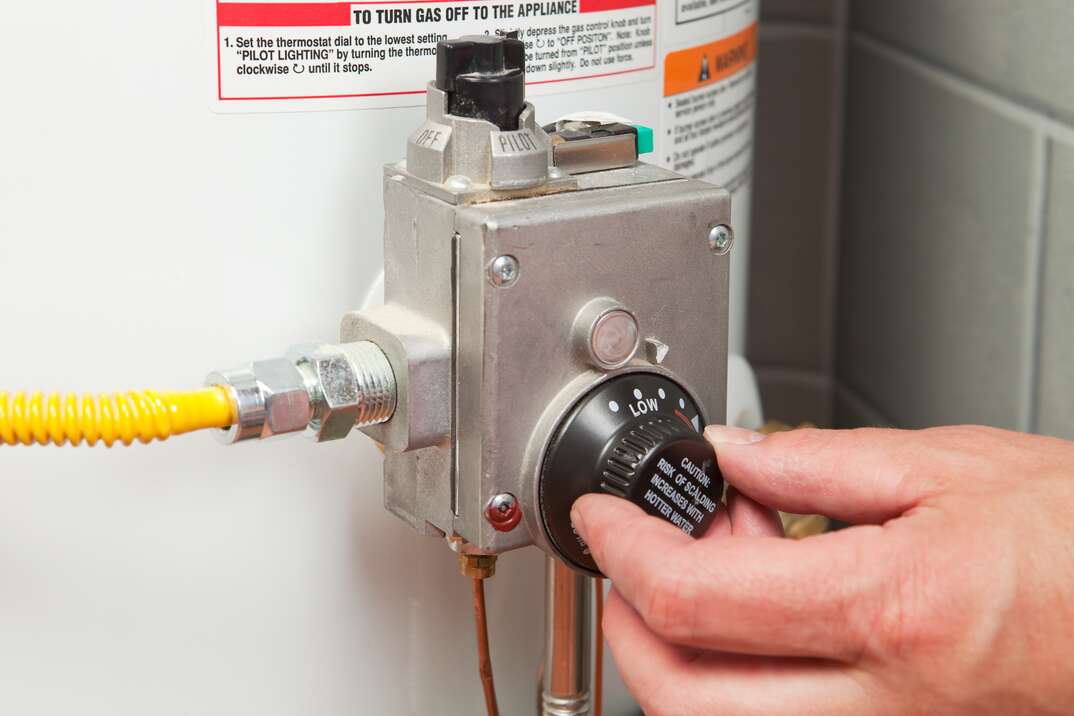How To Relight Your Water Heater’s Pilot Light

If your hot water isn’t working, no worries. Let’s try fixing it ourselves before calling in the experts. Start by checking the pilot light on water heater. It’s like a little flame showing whether your heater is working. Our repair folks always look there first. But what’s a pilot light? Why is it important, and where is it hiding?
Think of the pilot light as the heater’s signal that everything is okay. If it’s out, your heater might need some help. In this article, we’ll chat about these pilot lights in water heaters. We’ll also help you figure out where to find yours if it’s gone missing. Let’s get that hot water flowing again.
What Is a Pilot Light On a Water Heater?
No need to worry if you’re not sure what a water heater’s pilot light is. Most people don’t really think about how their water heater works, and that’s totally fine. When we talk about lights in machines, we usually mean something like a light bulb. But the pilot light in your water heater is a bit different—it’s a small flame that does important work.
When it’s time to make your water warm, whether you set a schedule or do it manually, your thermostat tells your water heater to start working. The pilot light is like a little fire starter. It lets out fuel into the heater’s burner, and then, whoosh. The gas catches fire thanks to the pilot light. So, in simple terms, the pilot light in your water heater makes sure the fuel burns, helping your water heater make heat. No need to be an expert; that’s what the pilot light is there for.
Signs Your Pilot Light Has Gone Out
If your pilot light isn’t working right, you’ll notice it pretty quickly. Here are three signs that something might be wrong:
NO HOT WATER
The big sign that your water heater isn’t happy is when there’s no hot water. That probably means the pilot light isn’t doing its job of starting the heating process.
GAS CONTROL VALVE INDICATOR
If you see a blinking light or get a message on the gas control valve of your water heater, that’s a sign of trouble. Some heaters have a light that changes colour. Check your manual or look on your heater for info on what the light or message means. Usually, one of the first problems mentioned is the pilot light being out.
WEIRD SOUNDS
If your water heater starts making strange sounds, it might be because of a pilot light issue. These sounds could mean there’s a problem with the part that starts the fire. If you hear something odd, you should check it out or ask for help.
NO FLAME
If you look at your water heater and there’s no little blue flame burning, that means the pilot light is out, and you’ll need some help to fix it.
THE FLAME IS TOO LARGE
Sometimes, the flame in your pilot light might be too big because there’s too much gas coming in (high gas pressure). This could happen because of an issue with the gas company. If you think that’s the problem, contacting them for help is a good idea.
You can also check the pilot burner opening to make sure it’s the right size. Some people have mentioned that, while cleaning, a small cap from the top of the pilot tube might fall down. This can make the pilot light too high, yellow, and a bit wobbly. If you see this happening, you might want to get in touch with a professional to fix it.
THE FLAME IS TOO SMALL
If your pilot light is too small, it might be because there’s not enough gas pressure. Check with your gas company to ensure they’re providing the right amount. If everything’s okay on their end, the issue might be with your water heater. Sometimes, the pilot light tube can get clogged with dirt from the gas line. In that case, ask your utility company for help and get a gas technician to install a dirt trap in your gas line.
Using the wrong pilot burner for your unit can also make the pilot light too small. Make sure the burner opening is the right size by checking the instructions from the manufacturer.
Before you start fixing the pilot light:
- Remember that it’s always on, and the flame should be blue.
- If it’s yellow, adjust it.
- Check that the water tank is filled before trying to light the pilot light.
Locating and Verifying Your Pilot Light
Dealing with a pilot light that won’t stay on in your water heater can be a real headache. Without this important part, your water heater won’t be able to make the water hot for things like showers, cooking, and cleaning. Here’s a simple guide to help you find your pilot light and spot possible issues.
Most water heaters have their pilot light near the bottom, just under the gas control valve. Open the door or panel to the burner chamber and take a look inside. You should see a tube with a blue flame – that means your pilot light is good to go. If there’s no flame, it means the pilot light is off, and it’s time to get a professional to help you out.
If there’s a flame, but it’s not blue, there might be some dirt or rust causing problems. This can make your water heater work less well. In this case, it’s best to ask a skilled HVAC professional to take a look and fix things up for you.
What Causes My Pilot Light to Extinguish?
Sometimes, your pilot light might go out, which can be bothersome. Here are some common reasons why it happens:
THERMOCOUPLE
There’s a part called the thermocouple that keeps things safe. If it gets dirty or bent, or if there’s something wrong with it, the pilot light might go out. A heating expert can run tests to figure out and fix the problem.
GAS PRESSURE CHANGES
Sometimes, changes in how much gas is in your system can make the pilot light go out. Usually, just lighting it again will solve this. But if it keeps happening, there might be an issue with your gas line or somewhere else in your system.
NOT ENOUGH AIR
Water heaters need air to work properly. If your water heater is in a place where there’s not enough air, like a closet, the pilot light might struggle. This affects your heater and can be risky for your health. A skilled technician can check if there’s enough air and might suggest moving your water heater. Also, getting a carbon monoxide alarm for safety is a good idea.
DRAFTS
Sometimes, if a lot of air is coming into your system, it can blow out the pilot light. Since it’s just a small flame, even a light breeze can put it out. If this keeps happening, contacting our team is a good idea. We can make sure your water heater’s chamber is sealed right and fix anything that needs fixing.
Recommendation
How To Clean A Wall-Mount Gas Heater
How to clean kitchen sink drain: A Step-by-Step Cleaning Tutorial
Can A Landlord Tell You How Clean To Keep Your House
Choice Home Warranty | Is It Top Choice in Home Warranties with George Foreman Endorsement?
Conclusion
Maintaining a functional pilot light in your water heater is essential for a consistent hot water supply. Recognizing signs of issues and understanding potential causes, such as problems with the thermocouple, gas pressure changes, or insufficient air supply, empowers homeowners to troubleshoot and address pilot light-related problems. Regular checks, proper cleaning, and prompt action when needed contribute to the efficient and safe operation of the water heating system. Seeking professional help for persistent issues and ensuring a reliable and uninterrupted hot water supply in your home is advisable.
FAQs
Q: Can I relight my own pilot light water heater?
A: Depending on the specifics of your water heater model, you might find a red or black ignition button, or alternatively, you may have to manually ignite it using a long lighter. Once the flame is initiated, ensure to keep the knob or button pressed for a full minute before gradually releasing it to ensure the pilot light remains lit.
Q: What is the purpose of a pilot light?
A: A pilot light is a diminutive flame that remains continuously lit to act as the ignition source for gas burners. It is a feature commonly utilized in various natural gas or propane appliances, including water heaters, clothes dryers, central heating systems, fireplaces, and stoves.
Q: How do I turn on my pilot light?
A: Depress and hold the reset button. If the reset button proves ineffective, use a lighter for ignition. While pressing the reset button, bring a grill lighter or a long match to the pilot light valve until the pilot ignites. Once the pilot light remains lit, turn the valve to the “on” position.
Q: Will the water heater work without a pilot light?
A: Many contemporary water heaters have transitioned away from utilizing a persistent standing pilot light and instead employ an automatic intermittent pilot or another ignition system. However, if your unit retains a standing pilot with a continuous flame, the unit will only function once you manage to keep the pilot light lit.






